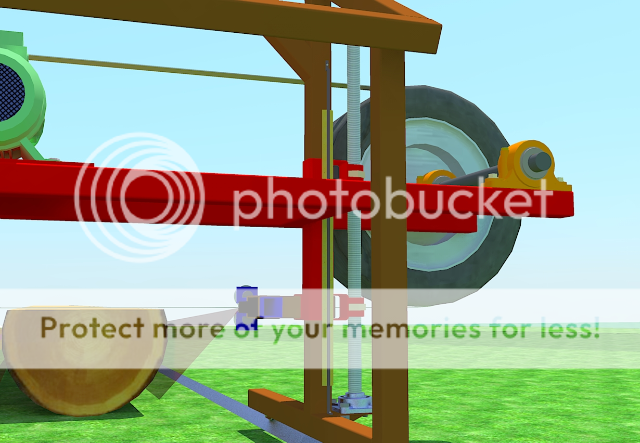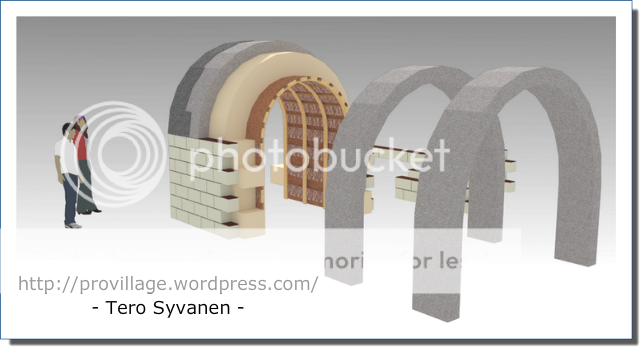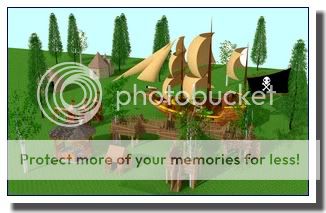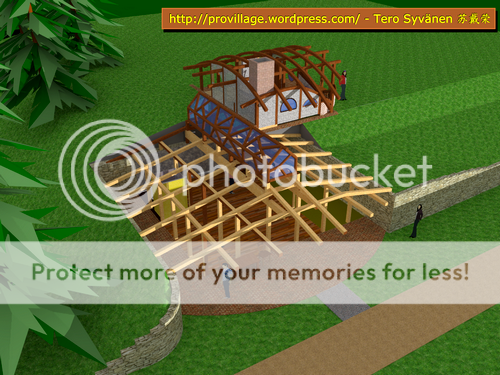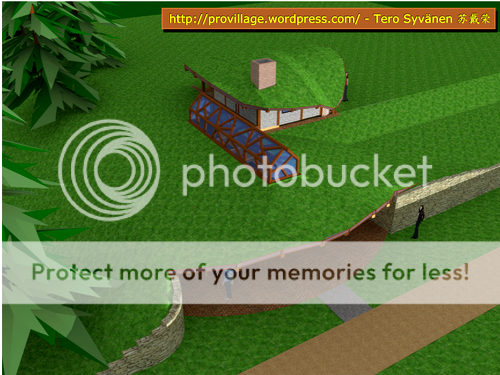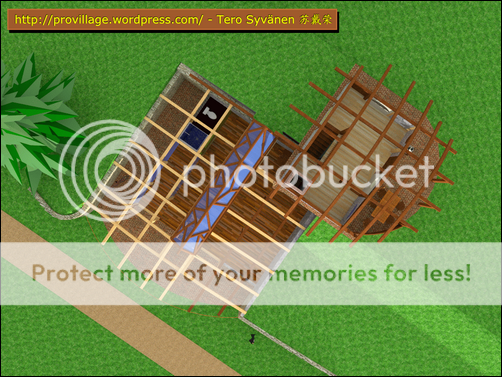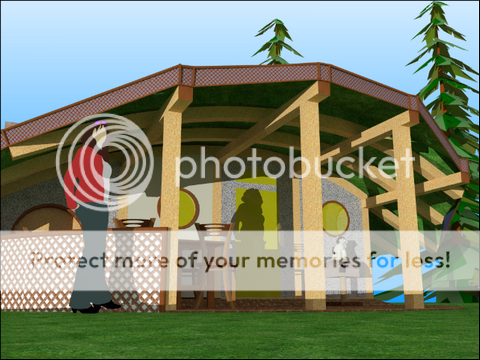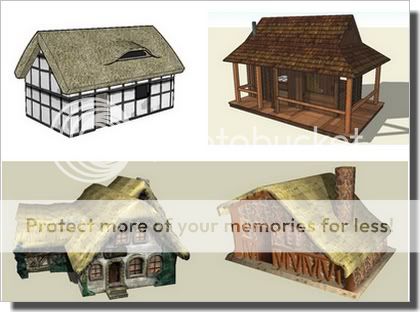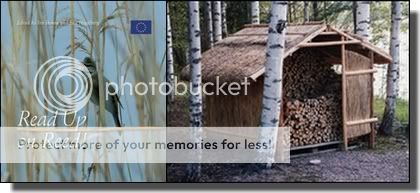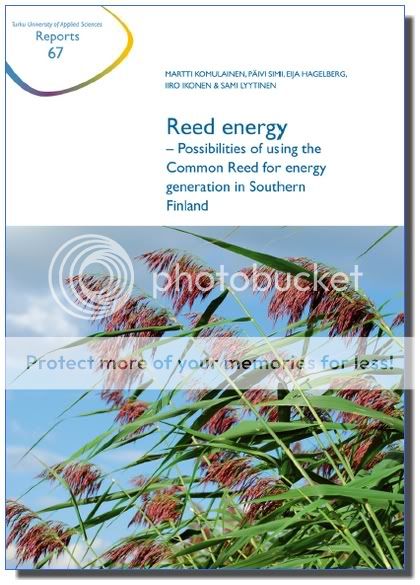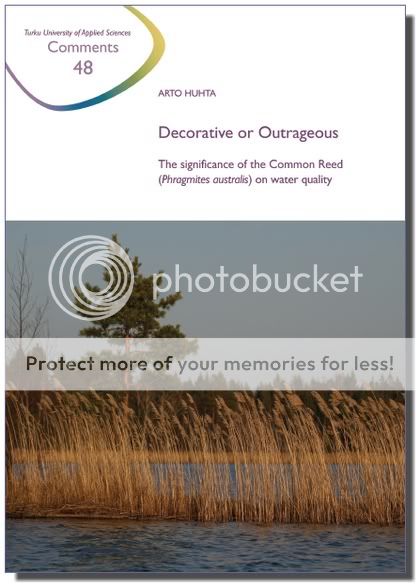I wanted to introduce the Provillage-project here. The
project contains, among other things: Natural architecture, eco- and
sustainable building methods and materials, DIY-descrptions.
Here I introduce the most essential parts of the project in this
thread in six parts. I will introduce one part every second or third day.
Parts 1 - 6:
1) The idea and ideology
2) The village
3) What would Robinson Crusoe do? [if he had stranded at the Junk-yard Islands... and there would be a lot of Fridays with technical abilities... unemployed for the moment, but willing to put up a shop as soon as they have learned a new trade...]
4) The people living in the village - the artisans
5) The guests, tourists, visiting families
6) Money & future
Part 1: The idea and ideology of the "Artisan and Culture-village" A detail-picture, made/copylefted by Tero Syvänen, ProVillage, from the log band-saw he has drawn in 3D. It will be published in the net, in 3D, with all measurements and documentation etc., as soon as we have built it. - To make drawings/blue-prints of everything, to make documentation of every process, to photograph and film all steps during the process, write instructions and make good
video material of this. Also publishing "what-not-to-do" and "here-we-made-a-mistake" or "avoid this". And above all, how to do it right.

Copyleft
- To publish all this free on the net, copyleft it.
- To help any village, parallelly formed village, in any country, with already collected, tested, and/or documented knowledge. With "paralelly formed village" I mean here a village that has *the same* aims as I describe here.
Two things we politely ask from those that use our "knowledge-bank": - To make the instructions, documentation, videos etc. in their language and to translate it to one other language, preferably English, as it is our lingua-franca.
- To copyleft this on the net.
Why? Do you see anything positive in that every builder is trying to study "what the law says" or "the codes". Or here in EU; "What are the EU-regulations on this or that?" or "Does the European Union support or help me economically if I do like this?"
It is
enough if we run the loops and jump through the hoops -
once, and then write about roofs:
"According to EU-regulations, § 123, directive XYZ, .... as follows: "The angle of the roof has to have a minimum of so and so degrees..." You find the whole paragraph here: www.EU.blablabla.org " The cat knows what is the max. degree of the slope of the roof, as he sits there, but he does not necessarily tell you. You have to go to the library and find out. 
If Henry makes something that he
should not have done, why should everyone else also fall into the same hole in the ice?
If Henry has, after long studies at the library, the knowledge what the minimum slant, the degree of the roof has to be, why would he not tell everyone about it? Just under the headline:
"When you plan a roof, remember...:" Even today these problems with the easily understandable "Learn-this-before-you-begin"-know-how-files are not necessarily found anywhere in a concentrated form, in any language. If this kind of problem would have been a part of the childrens world, it would have been solved years ago, on Sesame Street. But as the problem occurs only in the adult-world, the most logical thing to do seems to be too complicated to perform and put into practice.

I guess that there has been many committees around the 25 different countries in Europe about these questions, thinking in the bureaucratic lines of;
"Why it is not possible to come to a simple logical solution that even a child would had invented after two minutes of thinking and an ice-cream?"
This forum is a great example how people can solve the problems: They discuss and give each other advice! We want to take it a little bit further; different languages, catalogue everything, make tests in different villages, and document all the steps, to the last nail what we have performed.
Do you know how to make a distinguished entrance to "The Troll King"-restaurant?
Neither do we, but we will find out. Then also you will know. Furthermore - in the future: My village study and make tests about "How to make hand-made-windows-from-recycled-glass" and your village does the same with doors. Or floors, rain-water-collecting, toilets, ventilation, or anything else related to the subject... What-ever you are best at.
Everyone has not to be doing everything by himself, to invent the wheel again and again, but as in this forum, we learn from each other.
Henry

 1
1





